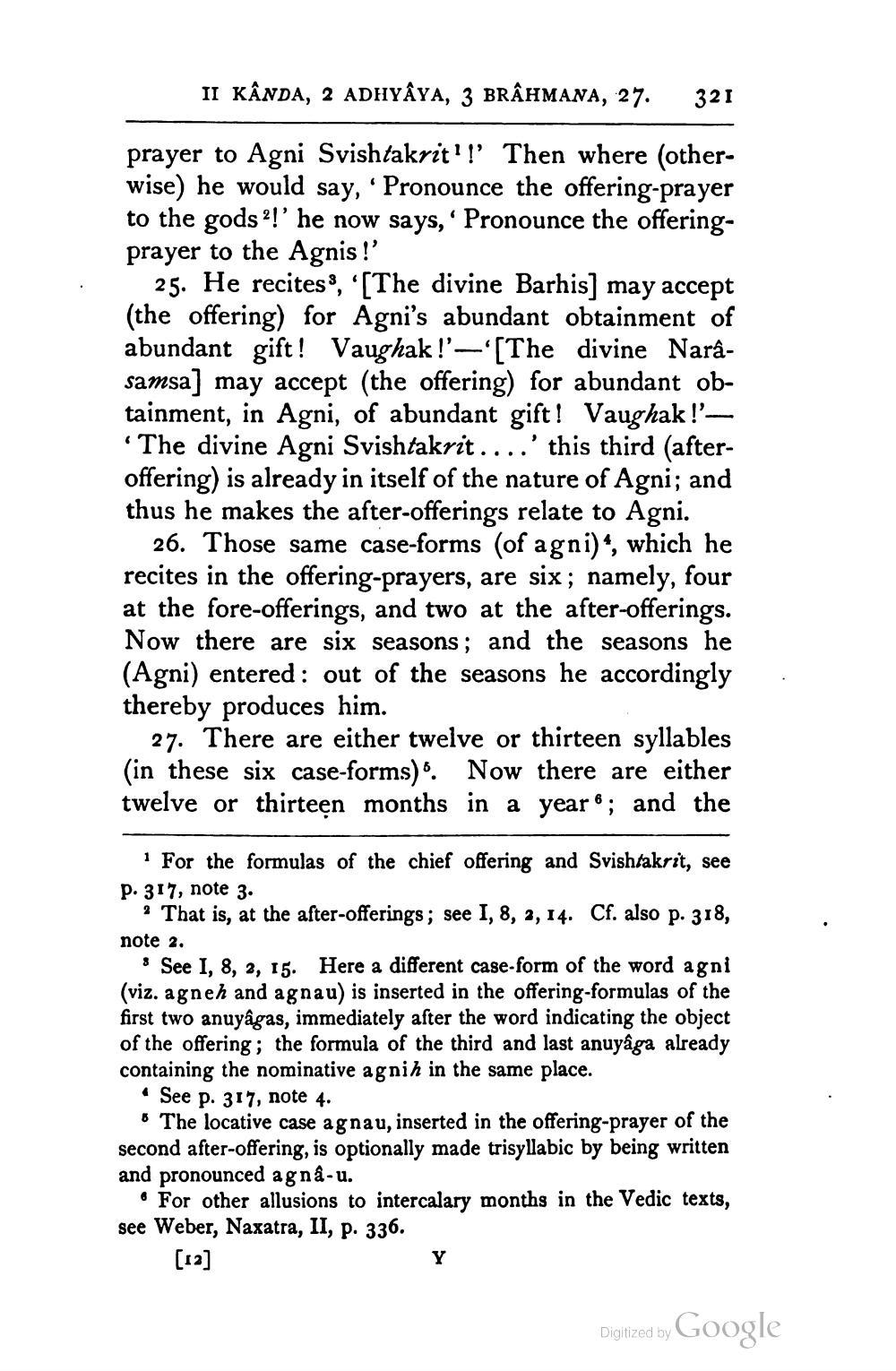________________
II KÂNDA, 2 ADHYÂYA, 3 BRÂHMANA, 27.
321
prayer to Agni Svishtakrit?!' Then where (otherwise) he would say, ' Pronounce the offering-prayer to the gods ?!' he now says, ' Pronounce the offeringprayer to the Agnis!'
25. He recites*, [The divine Barhis] may accept (the offering) for Agni's abundant obtainment of abundant gift! Vaughak!'-'[The divine Narâsamsa] may accept (the offering) for abundant obtainment, in Agni, of abundant gift! Vaughak!'•The divine Agni Svishtakrit.... this third (afteroffering) is already in itself of the nature of Agni; and thus he makes the after-offerings relate to Agni.
26. Those same case-forms (of agni)", which he recites in the offering-prayers, are six; namely, four at the fore-offerings, and two at the after-offerings. Now there are six seasons; and the seasons he (Agni) entered: out of the seasons he accordingly thereby produces him.
27. There are either twelve or thirteen syllables (in these six case-forms)". Now there are either twelve or thirteen months in a year 6; and the
* For the formulas of the chief offering and Svishtakrit, see P. 317, note 3.
· That is, at the after-offerings; see I, 8, 2, 14. Cf. also p. 318, note 2.
See I, 8, 2, 15. Here a different case-form of the word agni (viz. agneh and agnau) is inserted in the offering-formulas of the first two anuyâgas, immediately after the word indicating the object of the offering; the formula of the third and last anuyaga already containing the nominative agnih in the same place.
• See p. 317, note 4.
• The locative case agnau, inserted in the offering-prayer of the second after-offering, is optionally made trisyllabic by being written and pronounced ag nå-u.
. For other allusions to intercalary months in the Vedic texts, see Weber, Naxatra, II, p. 336.
[12]
Digitized by Google




